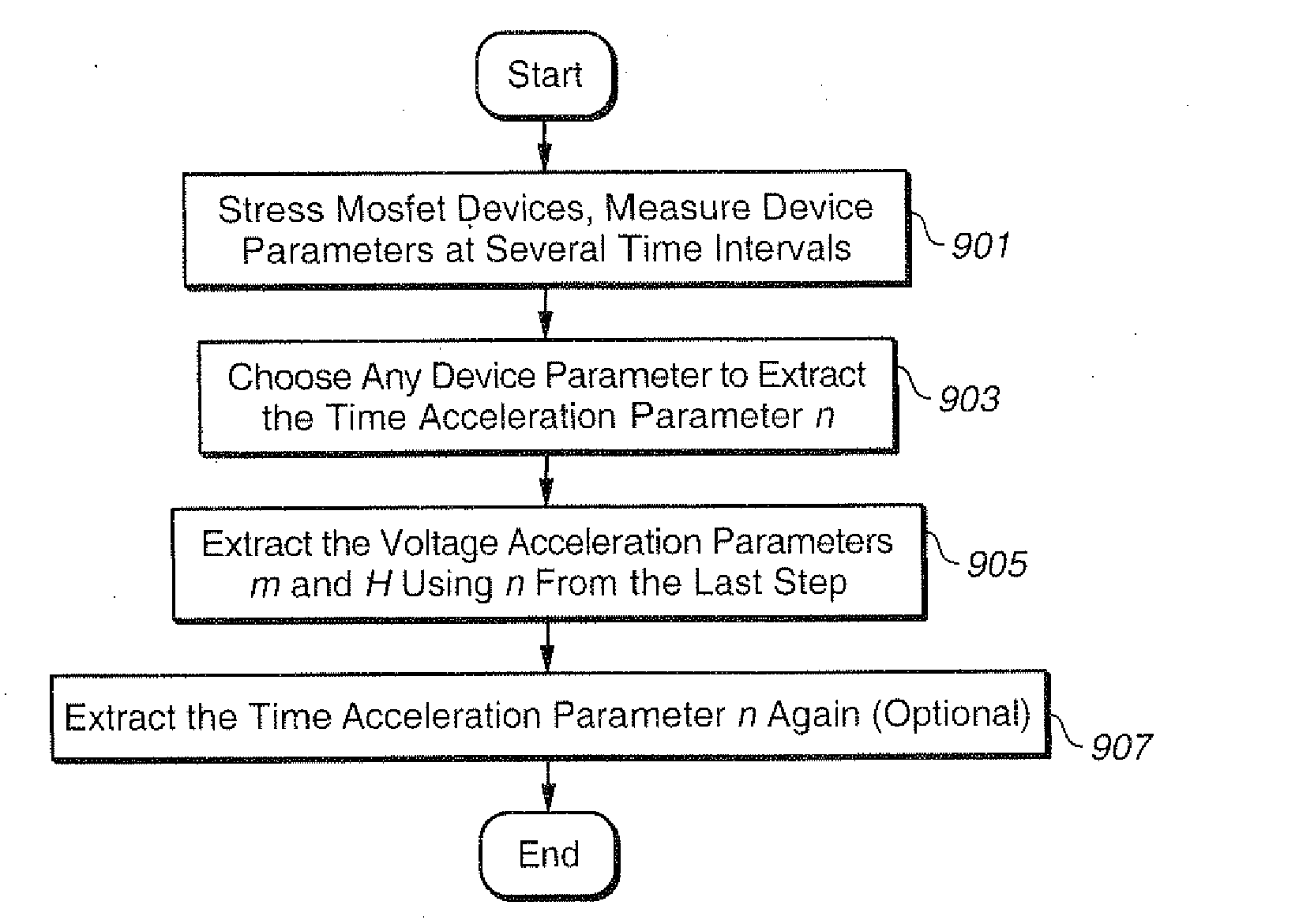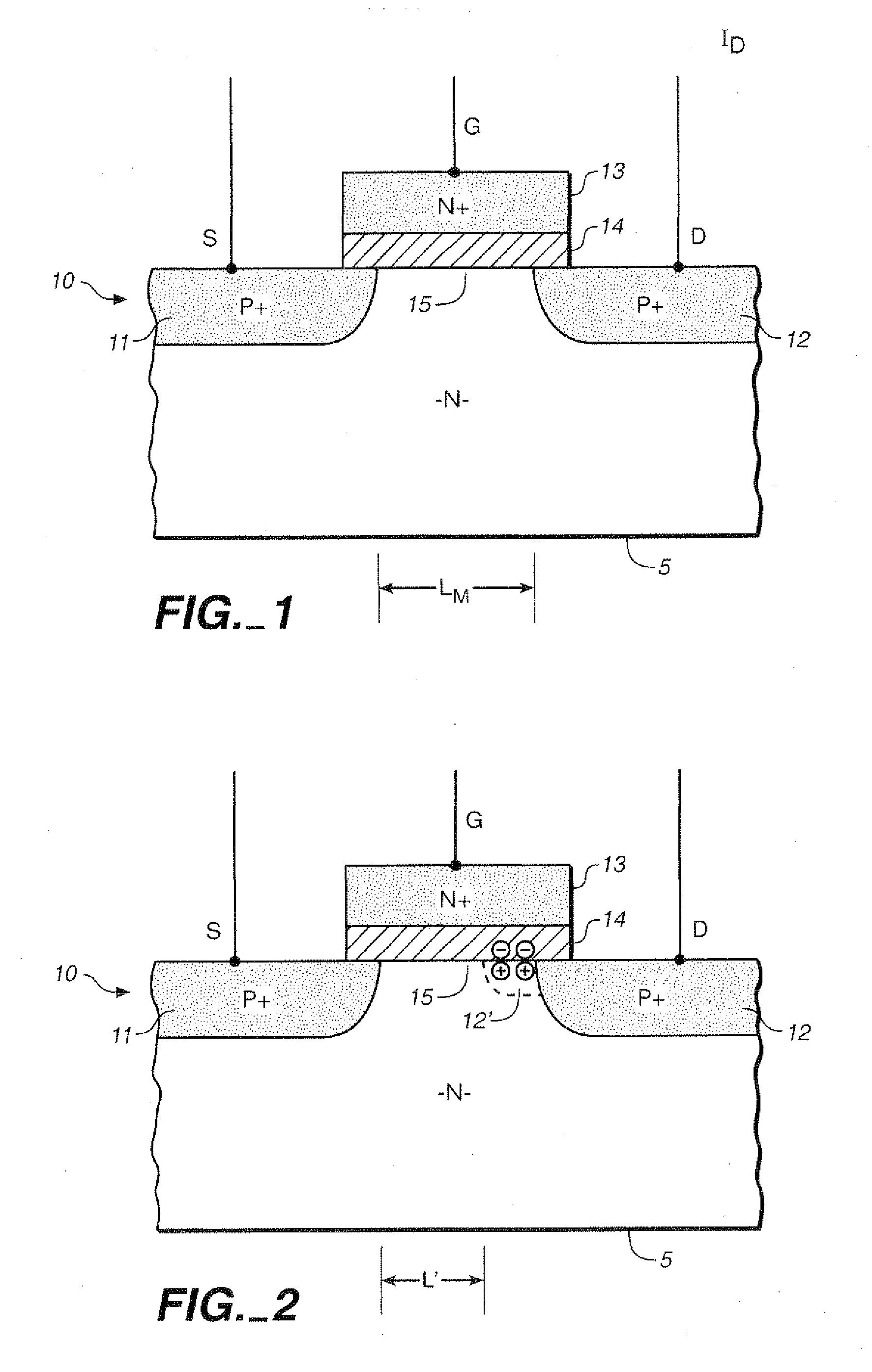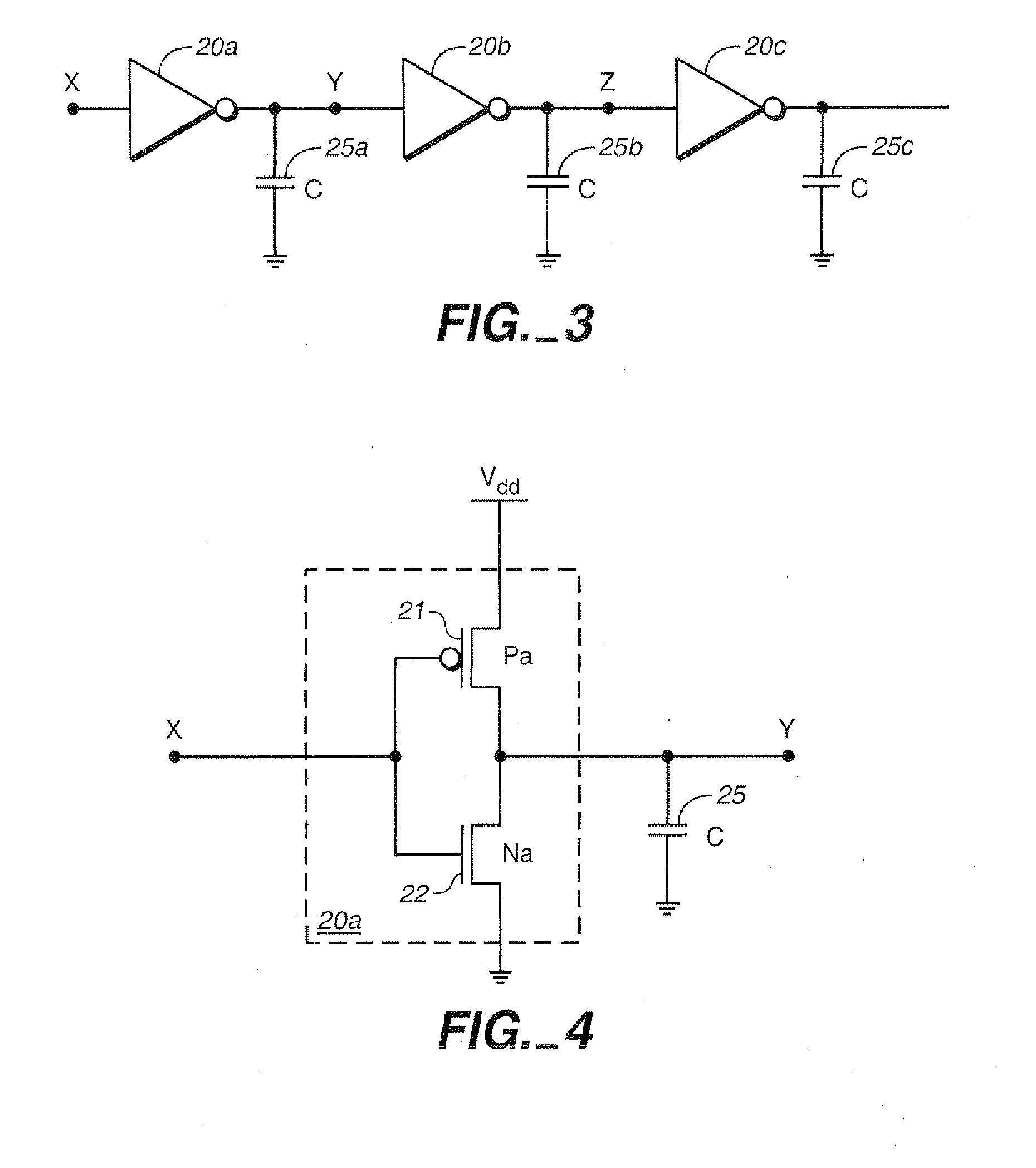Hot-Carrier Device Degradation Modeling and Extraction Methodologies
a technology of hot-carrier devices and degradation models, applied in the direction of individual semiconductor device testing, instruments, analogue processes for specific applications, etc., can solve the problems of pmos transistor b>10/b> deterioration due to device aging, oxide/silicon interface above channel region damage, etc., to achieve the effect of improving accuracy
- Summary
- Abstract
- Description
- Claims
- Application Information
AI Technical Summary
Benefits of technology
Problems solved by technology
Method used
Image
Examples
first embodiment
[0093]FIG. 11 is a flow chart of the first embodiment for building degraded device model. At step 1101, the devices will be stressed, and device characteristics and parameters will be measured at several time intervals. This can be performed at the same time as step 901 above, but makes additional measurements. In step 901, points were obtained for parameters at the time values; here, curves such as the I-V characteristics at the time values are also measured as these are used to extract the SPICE or other model. Step 1103 builds the device degradation model from the measured device parameters. This is the flow of FIG. 9 above.
[0094]In step 1105, fresh and degraded device models are built from the measured device characteristics and the device degradation level is calculated for each device model. The fresh and degraded models can be built separately. The model cards are extracted from the respective fresh and degraded curves, such as those shown in FIG. 12. FIG. 12 shows Ids-Vds cu...
second embodiment
[0097]FIG. 14 is a flow chart of a second embodiment for building degraded device model. Referring to FIG. 14, at step 1401, devices will be stressed, device characteristics and parameters will be measured at several time intervals. At step 1403, build device age model from measured device parameters. These are the same as in steps 1101 and 1103
[0098]The second embodiment differs in the next pair of steps. At step 1405, fresh device models are again built from measured device characteristics and device ages are again calculated for the stressed devices. Unlike step 1105, it is only the fresh models, and not the degraded models, that are constructed. The age is calculated from the Age=(AR)t relation.
[0099]At step 1407, analytical functions can be used to build the aged device model parameters as a function of device age by fitting the measured device parameters vs. device age values. Device model parameter at any age value can be calculated from the function. With this analytical fun...
PUM
 Login to View More
Login to View More Abstract
Description
Claims
Application Information
 Login to View More
Login to View More - R&D
- Intellectual Property
- Life Sciences
- Materials
- Tech Scout
- Unparalleled Data Quality
- Higher Quality Content
- 60% Fewer Hallucinations
Browse by: Latest US Patents, China's latest patents, Technical Efficacy Thesaurus, Application Domain, Technology Topic, Popular Technical Reports.
© 2025 PatSnap. All rights reserved.Legal|Privacy policy|Modern Slavery Act Transparency Statement|Sitemap|About US| Contact US: help@patsnap.com



